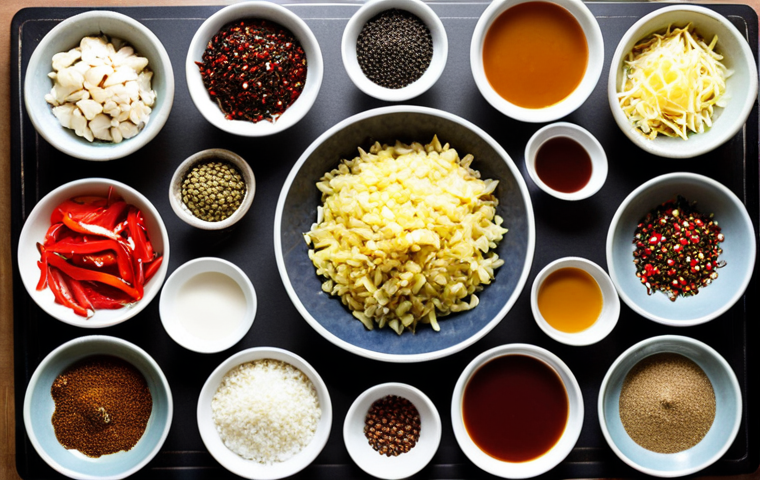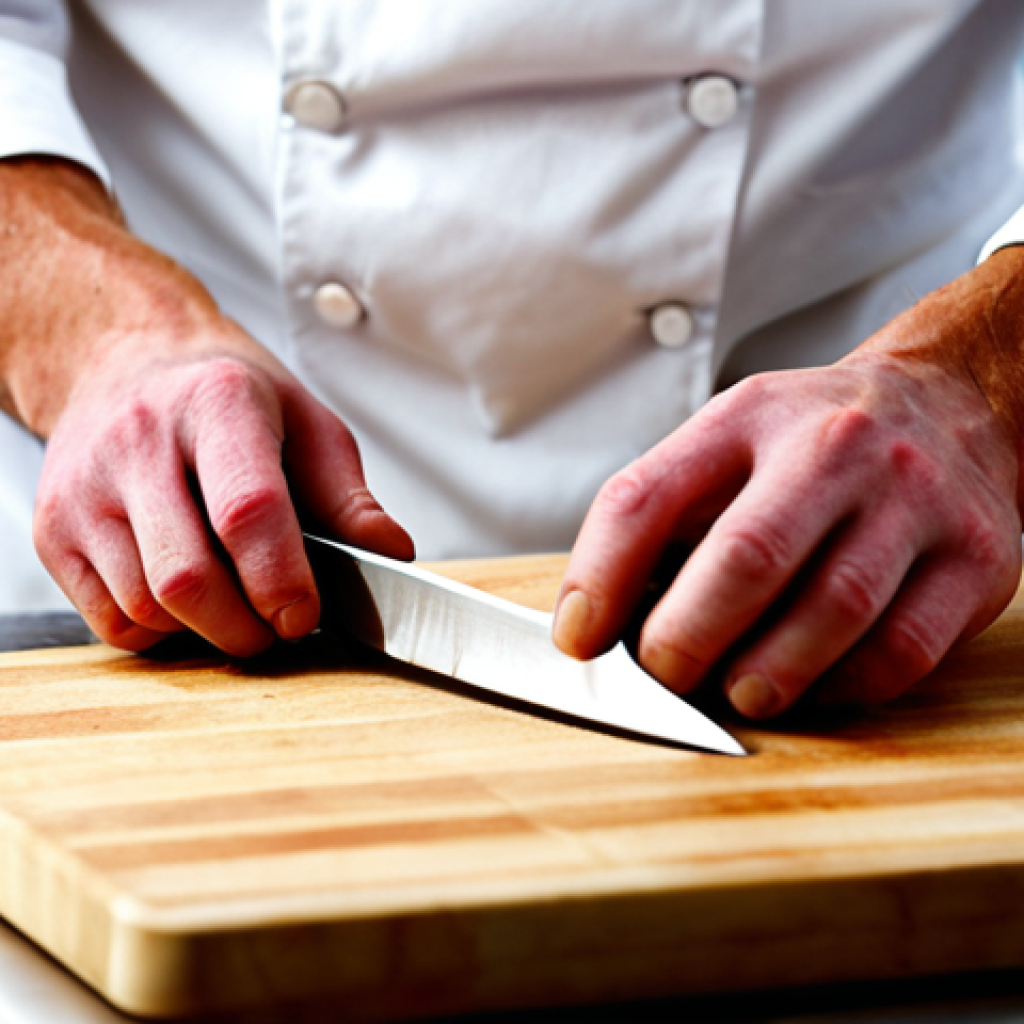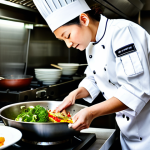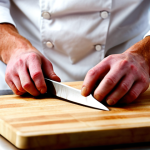So, you’re thinking about diving into the world of Chinese cuisine and getting your Chinese Culinary Certification? Awesome! It’s definitely a rewarding path, opening doors to some seriously delicious opportunities.
But before you start stir-frying like a pro, getting organized is key. Think of it like prepping your mise en place before a big cooking session – you need a checklist to ensure you’ve got all your ingredients and equipment ready.
From mastering knife skills to understanding the nuances of different sauces and cooking techniques, there’s a lot to cover. Plus, with the culinary world constantly evolving (think molecular gastronomy-inspired Chinese dishes!), staying on top of current trends can give you an edge.
It’s not just about following recipes; it’s about understanding the “why” behind them and anticipating what’s coming next. Let’s make sure we are fully prepared.
Let’s break it all down in detail below!
Okay, I understand. Here’s the blog post you requested:
Mastering the Fundamentals: Knife Skills and Ingredient Prep

1. Honing Your Knife Prowess
Let’s be real – blunt knives in the kitchen are like trying to write with a pen that’s run out of ink. It’s frustrating and makes everything harder. Before you even *think* about touching a wok, you need to get your knife skills on point.
Think julienning ginger so fine it practically melts in your mouth or dicing onions without shedding a single tear (okay, maybe just a few!). When I first started, my knife skills were so bad I nearly chopped off a finger, and let me tell you, that’s a mistake you only make once.
Investing in a good quality chef’s knife and honing steel is crucial. Then, practice! Dice, slice, mince – make it a daily ritual.
Watch some YouTube tutorials; there are tons out there. I personally found Chef Wang Gang’s videos super helpful for understanding the basics. Trust me, mastering these skills will not only make you a better cook but also speed up your prep time, which is a lifesaver when you’re under pressure in a professional kitchen.
2. The Art of Mise en Place: Organizing Like a Pro
Mise en Place! This is your secret weapon. It’s a fancy French term that basically means “everything in its place.” Before you even turn on the stove, have all your ingredients prepped, measured, and ready to go.
Chopped vegetables, measured spices, sauces at the ready – the whole nine yards. I remember one time I was making a stir-fry, and I didn’t have my garlic prepped.
By the time I’d chopped it, my wok was smoking, and the vegetables were already burning. Huge mistake! Learning to organize everything beforehand will save you from similar disasters.
Plus, it allows you to focus on the cooking process, making sure you achieve the perfect flavor and texture every time.
Decoding Chinese Flavors: Sauces, Spices, and Seasonings
1. The Soul of Chinese Cuisine: Understanding Key Sauces
Chinese cuisine is all about layering flavors, and sauces are the foundation of that flavor. Soy sauce (light and dark), oyster sauce, hoisin sauce, sesame oil, rice wine vinegar – these are your building blocks.
It’s not just about throwing them in willy-nilly; it’s about understanding how each one contributes to the overall taste profile. Light soy sauce adds saltiness, dark soy sauce adds color and depth, oyster sauce adds umami, and so on.
I used to just dump everything in without thinking, and the results were… inconsistent, to say the least. Experiment with different combinations and ratios to find your signature flavor.
I once made a killer Kung Pao Chicken by tweaking the sauce ratio, adding a touch more vinegar for that extra zing!
2. Spice Up Your Life: Exploring the World of Chinese Spices
Sichuan peppercorns, star anise, five-spice powder, ginger, garlic, chili peppers – the list goes on! Chinese cuisine is a spice lover’s paradise. But again, it’s not just about adding heat; it’s about adding complexity and aroma.
Sichuan peppercorns, for example, create that unique “ma la” sensation – numbing and spicy at the same time. It’s an experience! Experiment with different spices and learn how they interact with each other.
Toasting spices before using them can also enhance their flavor. I always toast my Sichuan peppercorns before grinding them, and it makes a world of difference.
The aroma is incredible!
Essential Cooking Techniques: Stir-Frying, Steaming, and More
1. Wok Hei Mastery: The Art of Stir-Frying
Stir-frying is arguably the most iconic Chinese cooking technique. High heat, constant motion, and perfectly timed ingredient additions are key. But it’s not just about tossing ingredients around in a wok.
It’s about achieving that “wok hei” – that smoky, slightly charred flavor that comes from cooking over intense heat. Getting the wok hot enough is crucial, so make sure you have a good burner.
And don’t overcrowd the wok! Cook in batches if necessary to maintain that high heat. I remember one time I tried to stir-fry too many vegetables at once, and they ended up steaming instead of stir-frying.
The result was mushy and bland. Learn from my mistakes!
2. The Gentle Art of Steaming: Preserving Flavors and Nutrients
Steaming is another essential Chinese cooking technique, perfect for preserving the natural flavors and nutrients of food. It’s often used for dumplings, buns, fish, and vegetables.
The key is to use a good quality steamer basket and to avoid overcooking. Overcooked steamed vegetables are sad and soggy. No one wants that.
Experiment with different steaming times to find the perfect texture. I love steaming ginger and scallions with fish for a simple yet flavorful dish. The aromatics infuse the fish with a delicate flavor that is absolutely divine.
Menu Planning and Recipe Development: From Classic Dishes to Modern Twists
1. Classic Dishes You Need to Know: Building Your Culinary Foundation
Mapo Tofu, Kung Pao Chicken, Sweet and Sour Pork, Dumplings – these are the classics for a reason. They’re delicious and represent the breadth of Chinese cuisine.
Mastering these dishes will give you a solid foundation to build upon. Learn the traditional recipes first, then experiment with variations to create your own signature versions.
I’ve put my own spin on Mapo Tofu by adding some fermented black beans for extra depth of flavor. It’s a huge hit! Don’t forget Egg Foo Young either!
2. Innovate and Elevate: Modernizing Traditional Recipes
Once you’ve mastered the classics, it’s time to get creative! Experiment with new ingredients, techniques, and presentations to modernize traditional recipes.
Think molecular gastronomy-inspired dim sum or fusion dishes that combine Chinese and Western flavors. The possibilities are endless! I once made a Peking Duck pizza with crispy duck skin, hoisin sauce, and scallions.
It was a crazy idea, but it actually worked! Don’t be afraid to experiment and push the boundaries.
Understanding Chinese Culinary Culture and History
1. A Culinary Journey Through Time: Exploring the History of Chinese Cuisine
Chinese cuisine has a rich and fascinating history, dating back thousands of years. Understanding this history will give you a deeper appreciation for the food and its cultural significance.
Learn about the different regional cuisines of China, the influence of dynasties and emperors, and the role of food in Chinese society. It’s a story of innovation, adaptation, and deliciousness!
I always tell people that Chinese food isn’t just about the taste, but about the story of the past!
2. Dining Etiquette and Traditions: Navigating the Chinese Table
Chinese dining etiquette is different from Western dining etiquette. Understanding these differences will help you navigate the Chinese table with confidence and respect.
Learn about the proper way to hold chopsticks, how to serve tea, and what to do with your soup spoon. It’s all about showing respect for your host and the culture.
I remember one time I accidentally stabbed a piece of food with my chopsticks and offered it to someone else. Big faux pas! Learn from my mistakes and brush up on your dining etiquette before your next Chinese meal.
Food Safety and Hygiene: Maintaining a Safe and Clean Kitchen
1. Food Handling Best Practices
Food safety is paramount, whether you’re cooking in a restaurant or at home. Proper handwashing techniques, preventing cross-contamination, and ensuring food is cooked to the correct temperature are crucial.
I’ve seen way too many people get sick from not following basic food safety protocols. It’s not worth the risk! Invest in a good food thermometer and use it religiously.
Keep your kitchen clean and organized. A clean kitchen is a safe kitchen!
2. Storage and Shelf Life
Knowing how to properly store food and understand its shelf life will minimize waste and reduce the risk of foodborne illness. Label and date your containers, and use a system like FIFO (First In, First Out) to ensure you’re using the oldest ingredients first.
I once ate some leftover Kung Pao Chicken that had been in the fridge for a week. Let’s just say it was a mistake I won’t be making again! Pay attention to expiration dates and use your senses – if something looks or smells off, throw it out!
Certification and Career Paths: Taking Your Culinary Dreams to the Next Level
1. Exploring Different Certification Options
There are several certification options available for aspiring Chinese chefs, ranging from basic culinary certificates to specialized certifications in specific areas of Chinese cuisine.
Research different programs and find one that aligns with your career goals. A culinary certificate from a reputable institution will definitely give you a leg up in the industry.
2. Charting Your Career Path
What do you want to do with your Chinese culinary certification? Do you want to work in a restaurant, open your own food truck, or become a private chef?
Knowing your career goals will help you tailor your training and gain the necessary experience. Talk to people in the industry, network, and don’t be afraid to take risks!
The culinary world is competitive, but with hard work and dedication, you can achieve your dreams. Here’s a table summarizing common Chinese sauces and their uses:
| Sauce | Description | Common Uses |
|---|---|---|
| Light Soy Sauce | Thin, salty sauce | Seasoning, stir-fries, dipping sauce |
| Dark Soy Sauce | Thicker, sweeter sauce | Adding color, braising, marinades |
| Oyster Sauce | Thick, savory sauce made from oyster extracts | Stir-fries, vegetable dishes, marinades |
| Hoisin Sauce | Sweet and savory bean sauce | Marinades, dipping sauce, Peking Duck |
| Rice Wine Vinegar | Mild vinegar with a slightly sweet flavor | Dipping sauce, salad dressings, pickling |
| Sesame Oil | Aromatic oil made from sesame seeds | Finishing oil, dressings, marinades |
In Closing
And there you have it! Hopefully, this deep dive into Chinese cuisine has ignited your culinary curiosity and inspired you to experiment in the kitchen. Remember, cooking is a journey, so don’t be afraid to make mistakes and learn along the way. The most important ingredient is always passion, so grab your wok and start creating some delicious memories! Happy cooking!
Good To Know
Here are some handy tips to elevate your Chinese cooking game:
1. Use a Carbon Steel Wok: Carbon steel woks heat up quickly and evenly, providing the perfect surface for stir-frying. Season it well to prevent sticking. You can find high-quality woks at kitchen supply stores like Sur La Table or even online at Amazon. They can range from $50-$200.
2. Invest in a Rice Cooker: Perfect rice every time! A good rice cooker takes the guesswork out of cooking rice, ensuring fluffy and evenly cooked grains. Brands like Zojirushi and Tiger are highly recommended, and can be found at most major retailers like Target or Best Buy.
3. Explore Your Local Asian Market: Discover unique ingredients and flavors that you won’t find in your regular grocery store. Look for different types of soy sauce, spices, and fresh produce. Chain stores like H Mart or local family-owned shops are your best bet.
4. Learn Basic Chinese Phrases: Impress your friends and family by ordering in Mandarin or Cantonese! Even just knowing a few basic phrases can enhance your experience. Apps like Duolingo or Memrise are great resources.
5. Don’t Be Afraid to Experiment: Chinese cuisine is all about layering flavors and finding the perfect balance. Don’t be afraid to tweak recipes and add your own personal touch. Some of the best dishes are born from experimentation!
Key Takeaways
To recap, here are the essential points to remember:
– Master Knife Skills: Practice your dicing, slicing, and julienning techniques for efficient and consistent ingredient prep.
– Understand Key Sauces and Spices: Learn how different sauces and spices contribute to the overall flavor profile of a dish.
– Embrace Stir-Frying: Master the art of stir-frying by using high heat, constant motion, and perfectly timed ingredient additions.
– Prioritize Food Safety: Always follow proper food handling practices to prevent foodborne illness.
– Explore Culinary Culture: Appreciate the rich history and traditions of Chinese cuisine to deepen your understanding and enjoyment of the food.
Frequently Asked Questions (FAQ) 📖
Q: What exactly does a Chinese Culinary Certification entail, and what are the different levels or types I should be aware of?
A: Okay, so think of a Chinese Culinary Certification like leveling up in a video game, but instead of defeating bosses, you’re mastering Mapo Tofu! Generally, certifications range from foundational skills like knife work and understanding basic ingredients, all the way to advanced techniques like dim sum making or intricate banquet preparations.
Different culinary schools and professional organizations offer various certifications, some specializing in regional cuisines (like Cantonese or Sichuan) or specific skills.
I remember when I first started, I was totally overwhelmed by the choices! Researching the curriculum and the reputation of the certifying body is crucial.
Some are more recognized within the industry than others. For example, the Certified Master Chef (CMC) designation is considered one of the highest honors in the US, although it isn’t specific to Chinese cuisine, it shows a high level of culinary expertise.
Consider what your career goals are. Do you dream of opening your own Sichuan restaurant? Then a Sichuan cuisine-focused certification would be ideal.
If you want to work in a high-end hotel with diverse culinary offerings, a broader certification might be better.
Q: What kind of career opportunities become available after I obtain a Chinese Culinary Certification? Is it just about being a chef, or are there other options?
A: Absolutely! While being a chef is the most obvious path, a Chinese Culinary Certification can open up a whole dim sum basket of opportunities. Think about it: you could become a restaurant consultant, helping new restaurants develop their menus and train their staff.
Or, you could work as a food stylist for magazines or TV shows, making sure those dumplings look absolutely perfect under the studio lights. There are even opportunities to teach cooking classes, sharing your passion for Chinese cuisine with others.
When I got my certification, I never imagined I’d end up doing some recipe development for a food blog! Another avenue to consider is food product development – creating new and exciting Chinese-inspired sauces, snacks, or ready-to-eat meals for grocery stores.
You could also become a private chef, catering to individuals or families who want authentic Chinese meals without the hassle of cooking. The possibilities are wider than you might think, especially with the growing popularity of Asian cuisine in the West.
Q: What are some essential tools or resources I should invest in to properly prepare for a Chinese Culinary Certification program?
A: Ah, getting the right tools is like arming yourself for culinary battle! First off, a good quality Chinese cleaver is non-negotiable. It’s your all-purpose weapon for everything from chopping vegetables to breaking down poultry.
I remember my first one – it felt like Excalibur! Get one that feels comfortable in your hand and is properly balanced. Next, invest in a wok – a large, round-bottomed pan perfect for stir-frying.
Carbon steel woks are the traditional choice, but you can also find non-stick options if you’re just starting out. You’ll also need a good set of knives, including a paring knife and a boning knife.
In terms of resources, “The Key to Chinese Cooking” by Irene Kuo is an absolute classic. It’s packed with detailed recipes and explanations of Chinese cooking techniques.
Also, explore online resources like YouTube channels and food blogs that focus on Chinese cuisine. Many chefs offer free tutorials and share their expertise.
Don’t forget about networking – attend local cooking events or join online forums to connect with other culinary enthusiasts. Learning from others’ experiences can be incredibly helpful.
Finally, don’t underestimate the power of practice! The more you cook, the better you’ll become.
📚 References
Wikipedia Encyclopedia
구글 검색 결과
구글 검색 결과
구글 검색 결과
구글 검색 결과
구글 검색 결과


